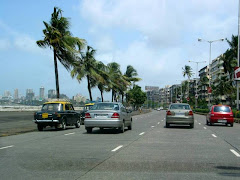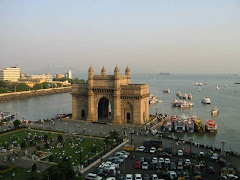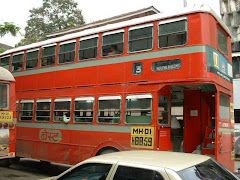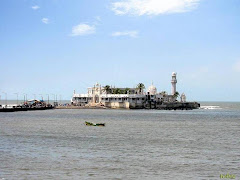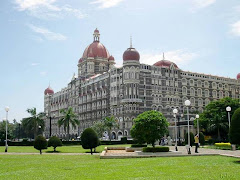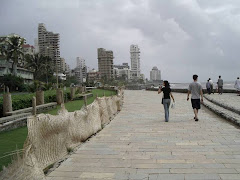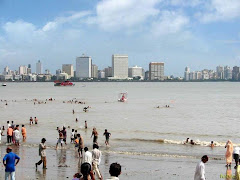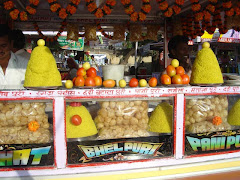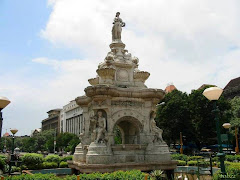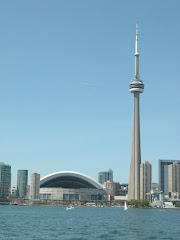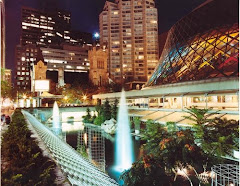ANGLO INDIANS, COTTON MARY ... AND THE BOMBAY OF THOSE DAYS
By Roland Francis
roland.francis at gmail.com
The Anglo-Indians bring many of my Bombay childhood memories
to mind. In the 1960s, Byculla, where I lived, was the
Anglo-Indian core of Bombay. There were their institutions
and neighborhoods, like Byculla Mechanics, Berkeley Place,
Clare Road, the spacious bungalows in avenue-lined Bombay
Central and of course the Shelter (which was an orphanage of
pretty girls) where we hung out a lot.
We had many adventures with our Anglo friends. They came here
for work from places like Amla-Nagpur, Jhansi, Bhusaval,
Igatpuri, Itarsi, Bangalore (remember the Anglo from
Bangalore), Hyderabad, Kolar Gold Fields and Ratlam-Ajmer.
These boys and girls passed out -- or, more
frequently, dropped out -- from high school. Their
fathers either worked in the Railways, the Posts
and Telegraphs or the Armed Forces. They were fed
up of small-town life and longed for the glamour of
the big city of Bombay much like their counterparts
of Boise, Idaho or Paducah, Kansas who make a
beeline to New York or Los Angeles for the bright
lights of the metropolis.
Of course many Anglo-Indians were long a part of Bombay city.
These families were the community elite, most of them high
ranking officers in the Police or the Army, Navy and Air
Force.
They were very kind to those less fortunate in their
community, but were limited in their ability to help the
young fellows, as the latter lacked a college education. Rare
was the town-and-country Anglo in those days that went to,
much less passed out, from college. Foremost among the Bombay
elite were the Amore family (pronounced ay'more). They were
good friends of Frank Anthony, an eminent lawyer, nominated
MP, friend of Jawaharlal Nehru and a mover and shaker in New Delhi.
The Amore patriarch was a successful businessman, who was
nominated an MLA to represent the Anglo-Indian community in
Maharashtra legislative assembly. At that time it was very
difficult to get immigration to racist Australia, but Frank
Anthony had persuaded the authorities there to allow in Anglo
Indians without any qualification or money on the grounds of
their (tenuous) British connection. They agreed, and gave him
the authority to certify an Anglo-Indian for this purpose.
Frank Anthony, in turn, gave the Amores the authority to do
this for the Bombay area. All travel and other expenses were
in most cases borne by the Australian government.
I mention all this to set the background for my
Cotton Mary story. Cotton Mary was so called
because she wore mostly cotton dresses. She was a
dark-skinned slightly gnarled woman with premature
wrinkles and the demeanor and gait of what we in
North America call a bag lady.
On any one but her, those dresses would have looked
fashionable and trendy but on Cotton Mary they showed very
poorly. No doubt some young stylish Anglo women must have
passed them on to her as hand-me-downs.
She had a Bombay reputation so widespread that her name could
possibly have inspired in the late 1990s, an Ivory-Merchant
film of the same name. The plot and setting of the Cotton
Mary of that film however bore no relationship to the real
life of her Bombay counterpart.
She was about 40-ish but looked more like in her 60s,
possibly due to her lifestyle which included roaming around
the streets of middle-class Bombay with a small child,
seeking alms. Mind you, she never asked, but she was quite
happy accepting them presumably on behalf of her young
toddler. As we later discovered, the toddler was not hers.
She was fond of imbibing copious amounts of Auntie's stuff
from the money she collected. The cooked food that people
gave, she took for her family whoever and wherever they were.
Cotton Mary made her rounds in Byculla, Bandra, Colaba and
many other Goan populated areas during late weekend evenings.
She chose lanes that had tall buildings on both sides,
occupied by middle class families. These locations were
perfect for coins that would come raining in, making it
convenient to collect and move on.
People on a Saturday evening were generally in a good mood
with the working week behind them and the Sunday to look
forward to. Weekends for the average Goan meant several
visits to Aunties' dens swigging country stuff along with
good friends, watching a football game at the Cooperage
grounds, a Konkani tiatr or an English play, or a movie.
If one got lucky, one would be invited to a foreign ship
docking at Bombay port where a fellow Goan would treat you to
scotch, choice ham and a variety of cheeses along with some
sherry or port.
We youngsters looked forward to the Saturday Date,
a one hour pop music radio program starting at 10
pm, the only English music program broadcast all
week by All India Radio in those days. We would
gather around the hi-fi 'radiogram' at the house of
one of the group, drinking no-name pop locally
bottled in nearby Mazagon and filled with dubious
colors and ingredients, but which was cheap. The
main thrill besides the music was having guys'
sisters joining us and being able to break out in
dance from songs on vinyl long playing records,
once the radio program was over.
On such a mellow evening, at 6 o'clock, Cotton Mary would
make her entry into the 'hood with the toddler in tow. Her
act consisted of cupping her hands for the bullhorn effect,
turning her face towards the sky and singing in a loud and
raspy voice:
I went to see my darr-lling
Last Saturday night
This was the only discernible part of the song. She used to
skim over the rest and we suspected she didn't know the
lyrics. Actually, it was the first line of a number called 'I
Ain't Nobody's Darling' sung by Byron G. Harlan. He was a
balladeer and comic-minstrel American cowboy from Kansas, USA
who recorded it in 1921. It must have been popular with some
up-country Anglos. The opening lyrics go like this:
I went to see my darling, last Saturday night
I went to see my darling, while the moon was shining bright
I asked her if she'd marry me and whaddya think she said
She said she wouldn't marry me, if the rest of the world
was dead
I doubt any alms-giver understood the song's words other than
the opening lines. It was a Saturday, she sang it in style,
she had a toddler and that was enough for the people to throw
their coins or to go scurrying into the kitchen to find some
food. On many occasions besides the rupee coins we threw her
from our third floor balcony, Mum would wrap some nice potato
chops or cutlets which she cooked for the weekend and send me
downstairs to give it to her.
I and the other lads of my building had a love-hate
relationship with Cotton Mary. Although many of us would
bring food and coin given by our parents, we would not part
with it without endlessly teasing her. Put it down to the
cruelty of teenagers. We asked questions like why her
boyfriend dumped her; who would have a girlfriend like her at
all; whose child was it she brought along; why she drank so
much and other barbs in that vein.
In today's world, no well-brought up kid would do that to a
less fortunate member of society, but in those days the bar
of what you could not do was much lower than it is now.
Don't forget that the beating we got from our
parents and teachers, sometimes for little reason,
was something our own children could not imagine
today, or will call it physical abuse and ask us
why we allowed it. For society then in general, it
was all part of raising well-mannered children, the
core of prevalent child-rearing philosophy being
'spare the rod and spoil the child'. And we the
victims took it lying down, never giving it a
second thought. The battering of our generation is
the subject of another tale.
Cotton Mary, as I said, both hated us and loved us. She would
sometimes ask us to help her collect the coins thrown on to
the road, when there were many, but suspected that we
pocketed some of it (untrue). She also suspected that we
pocketed part of the money our parents gave us to give her
(true). But generally, we treated her kindly.
Once, we decided to play a prank on Cotton Mary. We planned
to get her drunk, keep back her toddler for a little while
and put the fear of bejeejus into her, to have a few laughs,
not realizing where this could go.
So one Saturday, early on, we made off from home, with a
little hooch, each of us with a small measure from our dad's
stock, so as not to raise suspicions. We gathered around to
pour and found that we had the sum total of nearly a bottle.
Being a mixture of ten different country liquor stocks, the
resultant volume must have been quite potent. But the alcohol
was key to our plan.
So when Cotton Mary had done the neighborhood sing-and-collect
rounds, we invited her to have a drink on us in a quiet
corner of the compound of one of our buildings. She was not a
person to refuse such an offer.
So we made her comfortable, brought some seekh
kebabs and got our plan underway. We talked and she
drank and ate until she realized that it was
getting dark. Meanwhile one of us spirited the
toddler away from sight. He was cute as a button
but did not speak much. His talking consisted of
few words, not enough to make any meaning.
When she got ready to go, she was quite up the gum tree,
metaphorically speaking. She collected her bag of coin, her
bag of food and started walking towards the Byculla Railway
Station to catch a train to go home. We gave her a good head
start and then followed, toddler alongside, with intention of
returning the little fellow to her and chiding her for
leaving him behind.
Surprise of surprises, she was suddenly nowhere to be found.
We divided ourselves into scouting parties that went to the
railway platforms and the nearby lanes and restaurants to see
if she decided to continue with her singing there. But she
was gone without a trace. One party even went to Dhiraj's
matka and gambling joint to see if she had decided to indulge
herself from her collections, but to no avail.
Worried, we took a quick decision to keep the lad for the
night with Salu and his mother. Salu's dad was a steward on a
P&O cargo ship. His mum was a very kind and gentle woman who
would give us all sorts of English chocolates and crackers
that her husband brought when he disembarked.
More importantly, his mum was the only one who would fall for
our fibs, hook, line and sinker, while our Mums would ask a
thousand questions. Besides, she was quite happy giving
shelter to a talking, gurgling, smiling, happy two year old.
The next day, Sunday morning we all went for the early 8
o'clock children's mass at the Gloria Church, fully expecting
Cotton Mary to soon come looking for the young 'un. She came
at 10, crying, along with the boy's mother and his aunt.
We gathered around, keeping them busy while Salu
went to fetch the boy. Slowing releasing him,
without being seen himself, the boy wandered into
the group, to cries of "miracle, miracle" from the
three women. The lad muttered "Salu, Salu" in an
incoherent voice, probably more happy to remain
behind with Salu and his Mum's chocolates and tasty
Goan cooking rather than what he had now to return
to. We were glad to see our prank end. I am sure
Cotton Mary would forgive us had she known what we
did.
So the years passed with Cotton Mary still heroically doing
her rounds. The toddler had now outlived his purpose and she
started getting some other toddler. Her voice had become more
croaky with the constant serenading to the balconies.
Growing older with Auntie's stuff as prime nutrition didn't
help either. So one day I called a meeting of the boys with a
plan in mind. I explained the need to help our friend who had
provided us with many hours of fun and laughter, with some
meaningful present.
Some in our group were Anglo-Indian boys and they
told us how Mr. Amore would come once a month to
inspect the Anglo-Indian hostel where they lived.
During that visit, he would also enquire whether
any of the working lads were interested in
immigrating to Australia where their future would
hold much more promise.
For those who were interested, after a few questions about
where their parents lived, he would fill in their names into
an important-looking log book. At his next trip would give
them an official looking certificate, signed and sealed in
red wax, together with an air ticket to Perth, Brisbane or
Sydney -- their choice.
All they had to do after that was to make a passport, submit
Amore's papers and get the visa stamped at the Deputy High
Commission in the Fort area. No fuss, no checks and no proof
needed to show you were an Anglo-Indian. All it took was an
English sounding name. Real Anglos with names like Fernandes
(and yes, there were some) had more explaining to do.
This information was all we needed to hatch our plan for a
present for Cotton Mary.
We asked her whether she wanted to go to Australia. She
rather set us aback with "Where is Australia?" However we
were determined to do our good deed for her. We sat her down,
this time with no drink and asked what her last name was. She
told us it was Tully. That was a start.
We went on to mention that Australia was a land that was much
nicer than India. That she would no longer need to sing
there, that she would get a government pension and a house
and lied that Grandfather Tully's relatives would be there to
welcome her. She shook her head, not wanting to miss out on
the simple life she already had. Auntie's stuff and Goan
food. She wouldn't believe that she would get money in
Australia for doing nothing.
In retrospect, we were patient little monkeys. Here we were,
willing to give her a shot at a better life and she didn't
want it. She kept on repeating "I am happy baba, I don't know
what will happen to me in Australia."
We kept on at it and finally she relented if we
could include her younger sister. That was the
break we wanted. We now knew we had Cotton Mary
well hooked. After that, we spent a few months
prepping her to talk to Mr. Amore. No croaky
laughs, no attempt at stale jokes and especially no
asking Mr. Amore for money. On the appointed day
she came, dressed in her finest along with a real
beauty she claimed was her sister. We would never
know.
Mr. Amore came in as usual. After doing his round of the
rooms, he sat at the desk in the hall. In we came trooping
with Cotton Mary and her sister. There were Rudy Kerr, Rodney
Jackson and myself, accompanying. As the chief architect of
the plan, they had insisted I come, even though I was a Goan.
I was the spokesman and they knew the only one who could talk
them out of a jam.
It was a slow day for immigration interviews at the Anglo
Indian hostel in Byculla's Third Cross Lane. Surrounding it
were the Masina Parsi Hospital, Gloria Church and Bombay's
biggest timber mart (Lakda Bazar). I don't know why I
remember, but Miller and Company was almost next door.
Perhaps I was dreaming of Australia and what would
happen if I got entry myself. I quickly shut the
possibility out of my mind. I would get a whacking
for my efforts from Mum who every week had to buy a
fresh cane from the Byculla market since my hide
was getting tougher by the day with all that beating.
"So what's your name?" Mr. Amore started with me.
"But, but", I stuttered.
"No but, buts, son," said Amore.
"What is your name?"
"Roland Francis, sir" I began, getting more confident by the
word.
"So you want to go to Australia, Roland?" he asked.
"No sir," I said.
"And why not may I know?"
"I am too young for that sir", I said. "I have come to help
out with my aunts Mary and Cynthia Tully".
Mr. Amore took one look at them and shook his head. He had
heard many yarns from his people during his lifetime, but
this one seemed to take the cake. Deciding not to pursue it,
he asked Cotton Mary and her sister why they wanted to go
Australia.
"I won't have to sing 'I went to see my darling...."
"Shut up Mary", I interjected. Amore looked surprised.
"Is that the way you talk to your Aunts, Roland?" he asked
frostily.
Before I could reply, the Lord above sent his messenger in
the form of Amore's aide entering with a burra peg of scotch
that he carried for his long visits to the hostel. After the
first sip, thankfully there were no more questions.
I could see he entered Mary Tully and Cynthia Tully neatly in
his book and waved us off. The boys and I did mental flips.
We had pulled it off! While I still had Amore's attention, I
said, "Thank you sir, but do they have to come again to get
their visas and tickets or could I do it for them?" "Do you
trust this young bugger?" he asked Mary, who quickly nodded.
"Then that is that," said Amore, ending the conversation and
the interview.
After I collected the visas, we had a small party
for Cotton Mary on a roof corner of Alexandra
Terrace. She had tears in her eyes. So had we. It
was forgotten in the goodbyes and god bless. She
walked away from our lives and I hope that she
safely walked into Australia. I wish her happiness
wherever she is.
Now, Cotton Mary is Bombay's urban legend. Some women who
were mere girls then, still say 'I went to see my darling' to
describe any female who wears fancy clothes that do not suit
her. There have been Cotton Mary sightings long after she had
gone. There are tales of as lately as a few years ago that
Cotton Mary lookalikes were going around Bombay streets doing
her act.
Some will say that Cotton Mary was a tall, fair Anglo-Indian
woman who had a small pretty girl along with her. Others will
vouch that even in the early years of this century she could
be seen singing with the same voice in places like the
quadrangle of Grant Road's Dias buildings. All I can say is
that by 1971 the Cotton Mary we knew had disappeared from sight.
This is the stuff of days gone by. In the Western world
today, almost nobody beats their children or is allowed to.
Few neighborhoods in Toronto and New York look out for the
disadvantaged except with cheques to charity that are mostly
swallowed by 'administrative expenses'.
Sex to us, meant a little kissing and at most necking and
petting. That is no longer the case. No pre-teens and teens
play together in innocent fun. They either sit in front of
computers or are encouraged to use condoms in their 'sexually
active lives'.
Emigrating to the UK, Australia and Canada with the forms,
clearances, proofs and bank statements now required, is no
more the simple process that the kindly Frank Anthonys and
Amores had set up. People in USA and Canada do not like it
when you pat their small child with affection. They will
certainly call the police on you if you ask to take their
toddler for a walk within their view. Few people even of the
same community trust each other. And there are certainly no
Cotton Marys to entertain a First World city with 'I went to
see my darling, last Saturday night....'
--
Roland Francis is based in Toronto, Canada, and wrote this in
June 2008. This article is to be published in a forthcoming
book about Goans (and written by Goans) who lived in the
Bombay of the 1930s to the 1970s. If you would like to
contribute a chapter of your own slice of life there -- it
needs to be evocatively written -- contact the book's editor,
journalist Reena Martins at reenamartins at hotmail.com
-----------------------------------------------------------------
GOANET-READER WELCOMES contributions from its readers, by way
of essays, reviews, features and think-pieces. We share
quality Goa-related writing among the 12000-strong readership
of the Goanet/Goanet-news network of mailing lists. If you
appreciated the thoughts expressed above, please send in your
feedback to the writer. Our writers write -- or share what
they have written -- pro bono, and deserve hearing back from
those who appreciate their work. GoanetReader welcomes your
feedback at goanet at goanet.org Goanet Reader is edited by
Frederick Noronha fredericknoronha at gmail.com Please visit
Goanet's website at http://www.goanet.org/ For the latest Goa
News headlines visit: http://www.goanet.org/newslinks.php
-----------------------------------------------------------------
Goanet, building community, creating social capital for 13 years.
-----------------------------------------------------------------

